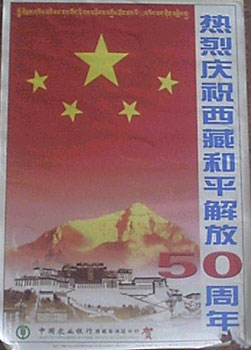 |
Understanding Modern Tibet aims to raise questions about popular and academic descriptions of contemporary foreign societies. How do these descriptions work? Do they tell us anything about the societies they describe? Are there more effective approaches that we as foreigners could pursue in order to know something of other communities? |
|
|
Our method will involve looking at contemporary Tibet. We will study some of the ways in which texts and images of Tibet are interpreted, and try to form our own interpretations in terms of the historical and cultural context of Tibet and of the wider region. In particular, we will try to look beyond the question of representation of places in foreign writings to questions of modernity and tradition, and to the role of earlier cultural and religious ideas within modern Tibet. The course should be useful for those with general interest in the East-South-Central Asian interface, in China’s nationality policies, in Tibet, or in regional affairs and development, as well as for students with general interest in history, religion or the social sciences. It will be open to both undergraduates and graduates. Classes will consist generally of a lecture followed by a discussion, with some sessions devoted wholly to class discussions and others to films, slides or videos. |
||
| Course
Description The course is divided into five sections. Part I: Representations of Tibet. This looks at some of the ways in which both foreigners and Tibetans have depicted themselves, and in particular at key ideas of their history. Part II: The Question of Modernity and Tradition: Tibet Before 1950 Was the 1950 arrival of the Chinese army and administration in Tibet the beginning of modern Tibet, or were there already signs of a "modern" society there? Part III: Problems in Tibetan History Since 1950 - looking at some of the choices and controversies faced by China's leaders in their Tibet policies since 1950, and especially at the ways in which Tibetan leaders responded to these policies. Part IV: Conflict and Resistance - using original documentation and visual images to look at questions surrounding political protest in the 1980s and 1990s, and studying in particular the role of women in this movement Part V: Contemporary Culture and Identity - "identity", like culture, can be formed from outside as well as from inside, and we look at Chinese views of Tibetans, and at some western ideas of Tibetan Buddhism as compared with actual religious practices. Are modern literature, popular writings, music, art, and film signs of a modern Tibetan culture? And what places and which people are included in this modern Tibet? Are the exile communities part of "modern Tibet"? And finally, what kinds of development options are being offered to Tibetans, and are there any indications in writing or in films as to the futures Tibetans themselves are considering? Part V: Contemporary Culture and Identity - "identity", like culture, can be formed from outside as well as from inside, and we look at Chinese views of Tibetans, and at some western ideas of Tibetan Buddhism as compared with actual religious practices. Are modern literature, popular writings, music, art, and film signs of a modern Tibetan culture? And what places and which people are included in this modern Tibet? Are the exile communities part of "modern Tibet"? And finally, what kinds of development options are being offered to Tibetans, and are there any indications in writing or in films as to the futures Tibetans themselves are considering? |
||
|
|
||